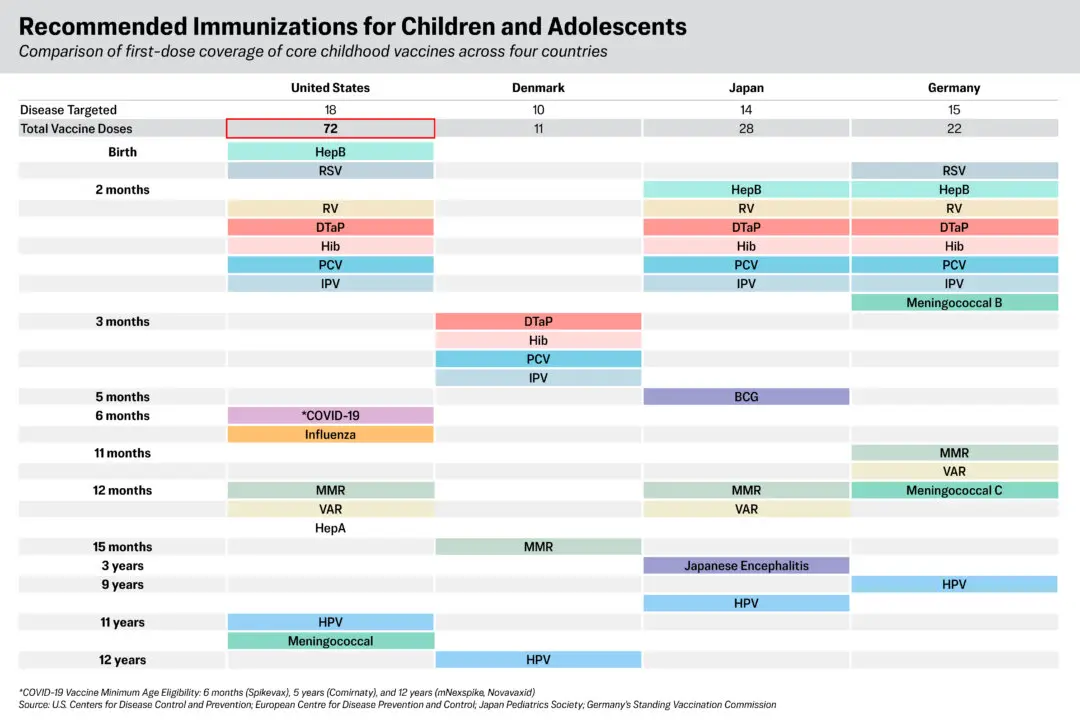NEW YORK—The city’s Department of Education released the yearly progress reports (excel) for elementary and middle schools Monday, with District 26 in Queens, adjacent to Nassau County on Long Island, having the highest performance.
The reports award letter grades (A-F) to schools based on student progress, performance and attendance, as well as feedback from parents, students, and teachers.
Compared to last year, New York City has 26 fewer schools. The majority of schools received an A (304), B (421), or C (365) grade, while 80 schools received a D, 23 received an F, and 35 new schools and schools in phase-out were not graded.
Schools’ grades remained relatively stable compared with last year’s results—86 percent of schools kept the same grade or moved up or down one grade, according to the Department of Education. Charter schools earned a higher percentage of A’s, than district schools, with 46 percent receiving an A.
The grades are an aspect of the city’s accountability measures for schools, and this year’s reports also include information on how each middle school’s graduates go on to perform in high school, according to a release from the Department of Education.
“Every year these reports have helped drive progress in our schools, so it’s important we set the right goals for success,” Schools Chancellor Dennis Walcott said in a statement. “By acknowledging progress in schools that help struggling students, we can keep more students on track during elementary and middle school.”
The progress reports rely heavily on students’ test results. Out of 100 points, 60 measure the progression of student’s proficiency in English and math, comparing growth on state exams as students move from one grade to another.
Another 25 points measure the number of students at a school that have reached proficiency in English and math, based on state exams, and also factors in, for grades 3 through 8, average proficiency ratings for all students in English and math. The only factor not based on exams are, for middle and K-8 schools, the number of students who have passed courses in English, math, science, and social studies.
The other 15 points are awarded based on school environment, with 10 points based on a survey that attempts to measure academic expectation, communication, safety, respect, and engagement. The other 5 points are based on attendance.
Too Reliant on Test Scores
Leonie Haimson, executive director of Class Size Matters, a nonprofit that advocates for class size reduction in public schools in New York City and the nation, has been critical of the reports since they began in 2007.
“Year by year variations in test scores are highly unreliable, as all statisticians know,” she said in a phone interview. “They’re 40 to 80 percent random, that’s why a school’s grades go up and down every year.”
As an example, 24, or about one-fourth, of the schools that received a D or an F this year received top grades the year before, according to Haimson.
Bad report grades can cause parents of higher-achieving students to leave the school, which brings the school down even more, Haimson added.
The United Federation of Teachers (the teacher’s union) has also criticized the tests for being too reliant on test scores.
Inside Schools, an independent guide to the city’s public schools from the New School’s Center for New York City Affairs, said the reports are useful to look at but should be taken with a grain of salt. Three schools in Manhattan, including the School of the Future, all received C’s this year despite having an average of about 80 percent of students reading and doing math at grade level, according to the organization. Meanwhile, the Middle School of Marketing and Legal Studies in East Flatbush, Brooklyn, got an A, “even though less than 40 percent of the students at the school are reading at grade level.”
School closures
When asked about schools with grades low enough to become eligible for school closure, Mayor Michael Bloomberg said at an unrelated press conference, “What it shows is that we’re being rigorous and seeing which schools are performing and which are not, and we have to do something about those that are not.”
An arbitrator this summer blocked school closings, with 24 low-performing schools, many in the Bronx, set to close. Bloomberg was hoping to close the schools and reopen them after replacing half of the original staff. The move would have enabled the city to gain roughly $58 million through a federal program that rewards attempts to make improvements to schools.
Bloomberg said the arbitrator’s decision was “an outrage.”
For parents with 5th graders looking for middle schools, Inside Schools recommends looking at the new middle school directories (ept.ms/SUP3Ot) and attending the district fairs, which begin Oct. 3 and can be found here: ept.ms/SUOYum
Progress Reports for high schools will be released later this month.





